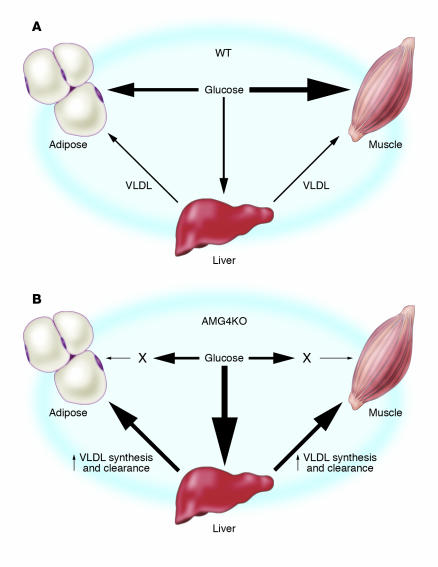Figure 1.
Metabolic fuel selection in wild-type and AMG4KO mice. (A) In the fed state, wild-type mice dispose of glucose primarily in skeletal muscle and to a lesser extent in adipose tissue and liver. Glucose is stored by the liver as glycogen or used as a lipogenic substrate. Hepatic triglyceride is packaged into VLDL lipoproteins and secreted. Circulating triglycerides in VLDL are hydrolyzed by lipoprotein lipase in adipose and muscle to deliver fatty acid substrates for storage (in adipose tissue) or energy production (by muscle). (B) In AMG4KO mice, GLUT4 deficiency markedly attenuates glucose uptake in adipose and muscle, which leads to hyperglycemia. Hyperglycemia is limited by increased hepatic glucose uptake and metabolism into lipogenic substrates, via induction of glucokinase, SREBP-1c, and acetyl-CoA carboxylase. Triglyceride synthesis and, presumably, VLDL synthesis and secretion, are increased. However, circulating triglyceride and free fatty acid levels do not increase due to their increased clearance, presumably due to increased fat oxidation in peripheral tissues.

